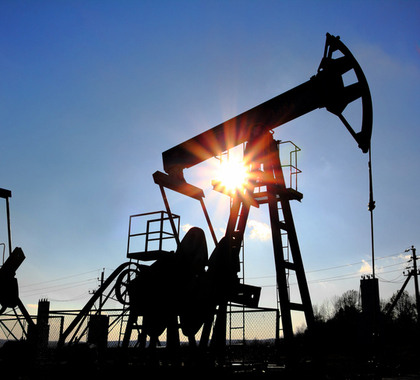While Oklahoma has a long history of seismicity, the state has seen a significant increase in earthquakes since 2013, with 881 measuring at or above a magnitude (M) of 3 on the moment magnitude scale, including 43 from January 6–11, 2016. M3 is roughly the magnitude needed for an earthquake to be felt on Earth’s surface and often produces “vibrations similar to the passing of a truck,” according to the U.S. Geological Survey (USGS).
This spate of earthquakes has led to public confusion as to whether hydraulic fracturing, commonly called “fracking,” is the direct cause of these earthquakes. Some state lawmakers are now calling for an outright moratorium on fracking in Oklahoma as a result.
Using the term “earthquake” to refer to the minor seismic activity produced by the overwhelming number of injection wells, although technically correct, is misleading. Most of these so-called earthquakes cannot even be felt by people. It is much more accurate to describe the rarely-experienced seismic activity produced by injection wells as mere tremors, rather than earthquakes.
“Earthquakes must generally be in the M5.5 to M6 range before slight damage occurs to buildings,” Heartland Institute Research Fellow Isaac Orr wrote. “Furthermore, it is important to note that an M3.5 earthquake is not half as strong as an M7, because the moment magnitude scale is logarithmic—each whole number on the scale is 10 times as large as the preceding number. Therefore, an M6 is 100 times more intense than an M4” and 1,000 times more powerful than an M3.
The actual hydraulic fracturing process itself, having been used in at least one million wells nationwide since 1947, is incredibly safe. Referencing a Durham University study, Orr notes in “nearly 200 instances of manmade earthquakes studied [since 1929], hydraulic fracturing was found to have been responsible for three earthquakes large enough to be felt on the surface.” The author of that study went on to conclude, “Hydraulic fracturing is not a significant mechanism for inducing felt earthquakes. … [It is] extremely unlikely any of us will be able to feel an earthquake caused by fracking.”
Earthquakes produced by wastewater injection wells are more common, but they are still incredibly rare and not very powerful. In a major study, the Environmental Protection Agency concluded most injection wells do not cause earthquakes and “very few” earthquakes produced by those that do can be felt by humans. Another study, published in the prestigious academic publication Science in 2014, found only four of the roughly 4,500 injection wells in Oklahoma had most likely induced seismic activity.
StatesFirst, a partnership between the Ground Water Protection Council and the Interstate Oil and Gas Compact Commission, noted the “majority” of injection wells in Oklahoma “do not pose a hazard for induced seismicity” and “only a few dozen … wells are believed to have induced felt earthquakes.” As the report points out, only 89 out of more than 10,700 Class II injection wells have “potentially” been linked to any seismicity.
Twenty percent of jobs in Oklahoma are supported by oil and natural gas development. A moratorium on a process that is incredibly safe and important to Oklahoma’s economy is not a sensible plan. Instead, sensible precautions can be taken to lessen the risk of increased seismicity. In many cases, these precautions are already being taken by drillers without any government mandates.
Some important precautions to avoid potentially harmful seismic activity include: Drillers should not inject wastewater near fault lines; the volume and pump rate of wastewater injected into wells should be restricted when necessary; and drillers should be monitoring pressure within injection wells.
The following documents provide additional information about hydraulic fracturing and seismic activity.
Fracking Facts: The Science, Economics, and Legal Realities
https://heartland.org/policy-documents/fracking-facts-science-economics-and-legal-realities
Hydraulic fracturing, commonly known as fracking, has been employed in the United States since the 1940s. Although innovation has improved the precision of the process, the essentials are the same. Utilizing horizontal drilling, a mixture of mostly water, sand, and trace amounts of chemicals, are used to create fissures in underground shale deposits to allow oil and natural gas trapped in hard rock to move toward the surface to be collected. Activists have blamed fracking and the processes associated with it for emissions of pollutants, earthquakes, and even groundwater contamination, though independent evidence consistently shows these allegations to be false. Leigh Thompson of the Texas Public Policy Foundation argues the evidence supporting fracking bans looks slim when attention is drawn to the facts.
Fracking and Earthquakes
https://heartland.org/policy-documents/fracking-and-earthquakes
Fracking is responsible for some of the greatest growth in oil and gas production the United States has ever experienced. Yet, as U.S. energy extraction increases, so have concerns about the safety of fracking, with The New York Times linking the practice to “Scores of earthquakes.” Research shows, however, the risk of earthquakes caused by fracking is minimal and can be fixed with modest siting regulations, bonding requirements, and wastewater recycling. Jillian Melchoir of the Independent Women’s Forum writes that it is essential to understand what the science is actually revealing about energy extraction and induced seismicity and to create balanced public policy that allows safe energy extraction to continue.
Injection Wells and Earthquakes: Quantifying the Risks
https://heartland.org/policy-documents/injection-wells-and-earthquakes-quantifying-risk
This report from StatesFirst, a partnership between the Ground Water Protection Council and the Interstate Oil and Gas Compact Commission, states data from the U.S. Geological Survey and several peer-reviewed studies show out of an estimated 40,000 disposal wells across the United States, only 218 of them have been linked to or suspected of being a possible cause of seismicity. This means only 0.15 percent of all Class II injection wells and 0.55 percent of all federally regulated disposal wells in the United States have been tangentially associated with a seismic event of any size.
Managing the Risks of Hydraulic Fracturing
https://heartland.org/policy-documents/managing-risks-hydraulic-fracturing
Kenneth P. Green of the Fraser Institute argues policymakers should ignore the siren song made by those calling for moratoria or bans on fracking.
Hydraulic Fracturing a Game-Changer for U.S. Energy and Economies
https://heartland.org/policy-documents/hydraulic-fracturing-game-changer-us-energy-and-economies
In this Policy Study from The Heartland Institute, Heartland Research Fellow Isaac Orr explains the advantages and disadvantages of smart drilling and its alternatives. Orr reviews the background and potential of hydraulic fracturing in the United States and puts that potential in the context of the supply of and demand for oil and gas. He addresses the environmental impacts of hydraulic fracturing, both positive and negative, as well as the public safety issues raised by activists, such as potential harm to drinking water supplies. Orr also discusses how oil and gas production is regulated at the state and national levels and suggests appropriate policies for the industry.
Betty Grande: Fracking and Earthquake Misconceptions
https://heartland.org/podcasts/2015/04/30/bette-grande-fracking-and-earthquake-misconceptions
In this edition of the Heartland Daily Podcast, Research Fellow Isaac Orr and Research Fellow Bette Grande discuss earthquakes and their relationship with hydraulic fracturing. Grande also gives the listeners an inside look at the state of oil production in North Dakota in the wake of falling oil prices.
Hydraulic Fracturing: Critical for Energy Production, Jobs, and Economic Growth
https://heartland.org/policy-documents/hydraulic-fracturing-critical-energy-production-jobs-and-economic-growth
Increased energy production on private lands in the United States has been one of the most promising economic success stories in recent years. A large part of the success is due to an energy-extraction process known as hydraulic fracturing. Misconceptions about hydraulic fracturing, also called fracking, abound. The Heritage Foundation’s Nicolas Loris explains hydraulic fracturing is safe when regulated effectively and says fracking greatly increases the nation’s energy production, thus promoting job creation.
Potential Injection-Induced Seismicity Associated with Oil & Gas Development: A Primer on Technical and Regulatory Considerations Informing Risk Management and Mitigation
https://heartland.org/policy-documents/potential-injection-induced-seismicity-associated-oil-gas-development-primer-techni
In an effort to eliminate induced earthquakes from wastewater disposal wells, state regulators, geologists, seismologists, industry, and environmental groups worked together to create this 148-page report detailing how earthquakes can be caused and the best ways to mitigate the risks associated with fluid disposal.
Triggered Earthquakes and Deep Well Activities
https://heartland.org/policy-documents/triggered-earthquakes-and-deep-well-activities
Craig Nicholson and Robert L. Wesson argue historical data regarding oil and natural gas production are important for current discussions of the disposal of wastewater from hydraulic fracturing and conventional oil and gas operations. As scientists gain a better understanding of what is causing the new wave of seismic activity, they will have a better idea of how to prevent it.
Nothing in this Research & Commentary is intended to influence the passage of legislation, and it does not necessarily represent the views of The Heartland Institute. For further information on this and other topics, visit the website of Environment & Climate News at http://news.heartland.org/energy-and-environment, The Heartland Institute’s website at http://heartland.org, and PolicyBot, Heartland’s free online research database, at www.policybot.org.
The Heartland Institute can send an expert to your state to testify or brief your caucus; host an event in your state; or send you further information on a topic. Please don’t hesitate to contact us if we can be of assistance! If you have any questions or comments, contact John Nothdurft, Heartland’s director of government relations, at [email protected] or 312/377-4000.




